The Economics and Statistics Division maintains archives of previous publications for accountability purposes, but makes no updates to keep these documents current with the latest data revisions from Statistics Canada. As a result, information in older documents may not be accurate. Please exercise caution when referring to older documents. For the latest information and historical data, please contact the individual listed to the right.
<--- Return to Archive
For additional information relating to this article, please contact:
December 09, 2019HOUSING STARTS, NOVEMBER 2019 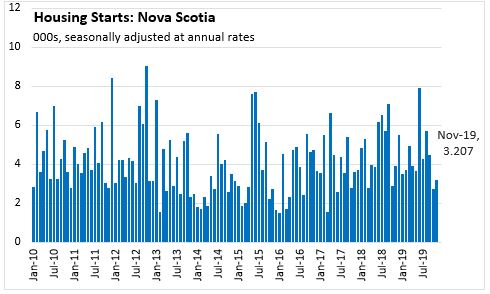
Nova Scotia's housing starts (seasonally adjusted annualized rate) increased 18.7 per cent to 3,207 in November compared to 2,701 in October. Compared to November 2018, housing starts were down 17.4 per cent.
The monthly increase in November reflected higher starts in Halifax and lower starts in Nova Scotia outside of Halifax. Housing starts in Halifax were up 70.1 per cent to 2,261 in November. Outside of Halifax, housing starts declined 31.0 per cent to 946. Compared to November 2018, starts were up 12.3 per cent in Halifax and down 49.4 per cent outside of Halifax.
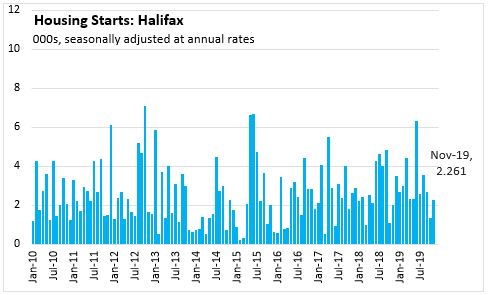
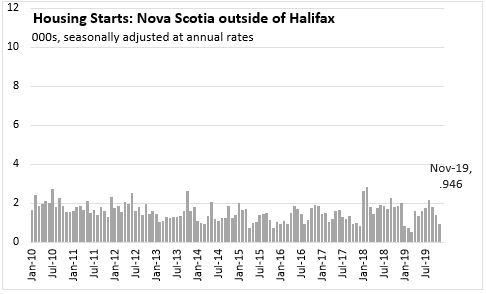
The six-month moving average of housing starts in Nova Scotia and Halifax was relatively flat through 2017. During 2018, the six-month moving average rose due to higher starts for multiples and declined after reaching a peak in September. The six month moving average rose until the summer of 2019 due to trends in the Halifax market and has subsequently peaked. Outside of Halifax, the six month moving average was elevated through 2018 but has since returned to levels similar to those seen in 2017. Since the spring of 2019, the six month moving average has been trending upward outside of Halifax.
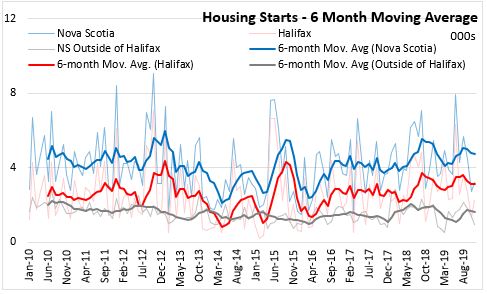
In urban areas, housing starts for multiples are generally higher than for singles with greater variability month-to-month. The six-month moving average for singles was relatively flat through most of 2019 and has recently risen to levels similar to early 2018. The six-month moving average for multiples rose during the summer months of 2018 and declined until the first quarter of 2019. Since then, the six-month moving average for multiples rose through Q2 before declining through Q3.
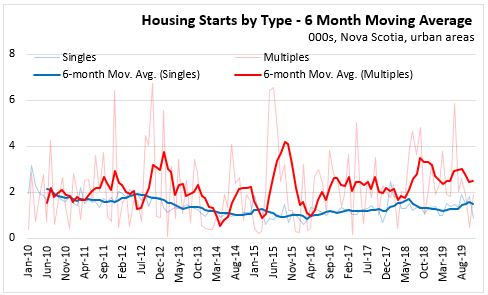
Nationally, housing starts rose 0.3 per cent in November to 201,318 compared to 200,674 in October. National housing starts were down 10.4 per cent compared to November 2018.
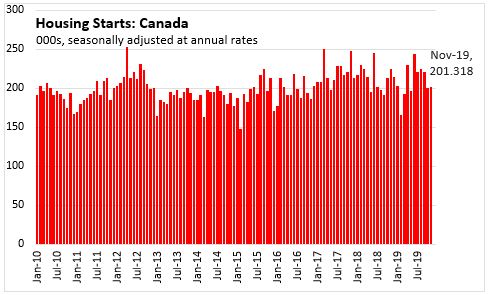
Comparing the first eleven months of 2019 with the same period of 2018, housing starts are down 9.3 per cent in Nova Scotia. Housing starts were up in four provinces, with the fastest increases reported in New Brunswick (+32.0 per cent) and Prince Edward Island (+19.8 per cent). Newfoundland and Labrador (-46.9 per cent) reported the fastest decline year-to-date, followed by Saskatchewan (-35.4 per cent). Nationally, housing starts are down 2.3 per cent over January-November 2018.

Note: Urban areas are defined as areas over 10,000 people
Source: Statistics Canada
CHMC Housing Market Information Portal
<--- Return to Archive